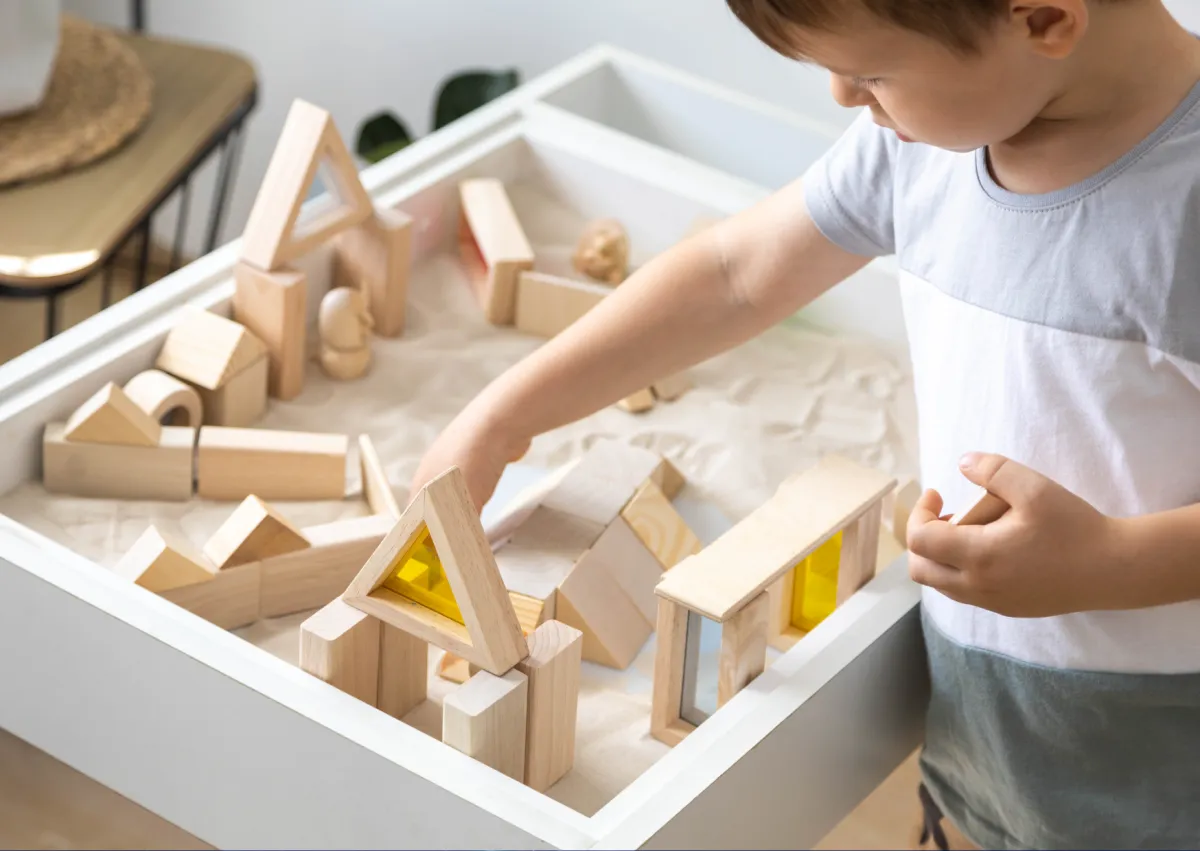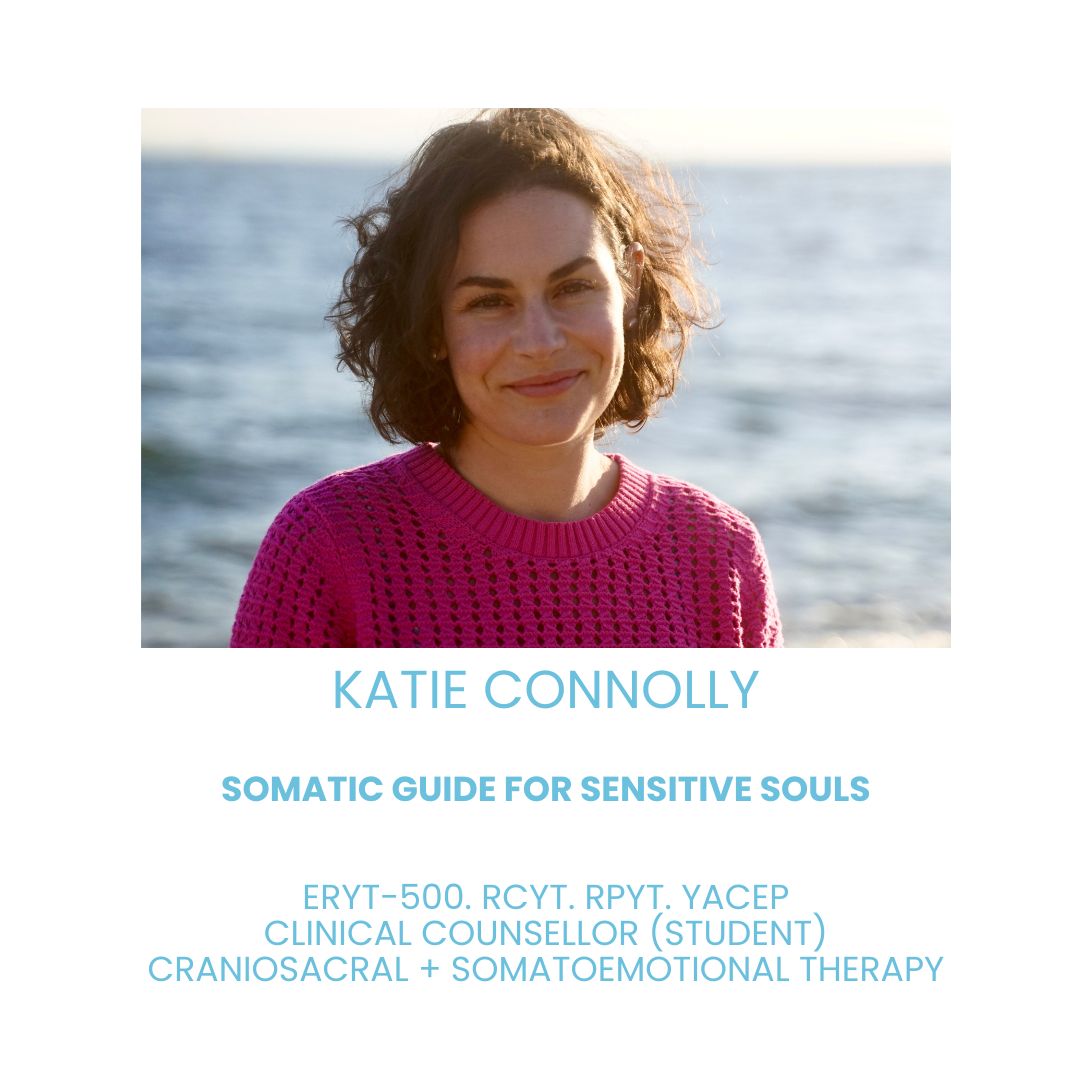
The 8 Senses You Never Knew You Had (and How They Affect Sensory Processing)
In a world buzzing with stimuli, most of us navigate seamlessly, filtering out unnecessary input while focusing on what's relevant. For individuals with Sensory Processing Disorder (SPD), this can be a daily struggle, as messages can get jumbled up or feel too strong, making it hard to focus and stay calm. So while SPD is like having a superpower that makes your senses extra sensitive, it can also lead to overwhelm. Most importantly, SPD affects everyone differently.
In this post, we'll dive into the 8 senses, explore the complexities of sensory processing disorder, and discuss related challenges like sensory-based motor disorder, dyspraxia, and sensory stimulation.
Keep reading to learn the following about Sensory Processing Disorder:
What sensory processing disorder is & why I call it sensory processing differences
The 6 presentations of sensory processing disorder or differences as I prefer to call it
How our 8 senses may be overloaded and how to mitigate this stress
6 practical ways to empower our SPD children
Or scroll down to learn with me on YouTube!
What is Sensory Processing Disorder?
Sensory Processing Disorder is a neurological condition that affects how the brain receives, processes, and responds to sensory information from the environment and the body. Individuals with SPD may be hypersensitive (over-responsive) or hyposensitive (under-responsive) to certain stimuli.
How does this happen? The craniosacral system, part of the nervous system, involves 12 cranial nerves, which include; 2 accessory nerves in our neck, 9 innervated our face and senses, and our vagus nerve bringing information from our brain to our organs and vice versa.
This condition can manifest in different ways and varies greatly from person to person. This can lead to a range of challenges in interpreting and responding appropriately to sensations like touch, sound, sight, taste, smell, movement, and body awareness.
For example, a child with SPD may find everyday sounds like a vacuum cleaner or a crowded room overwhelmingly loud, while another child might seek out sensory input, such as banging into walls or craving deep pressure. Common signs of SPD include sensitivity to textures in clothing, difficulty focusing in noisy environments, and a heightened awareness of sensations others may not notice.
The challenges posed by SPD can affect daily activities, from eating to participating in social situations. Children and adults with SPD may struggle with anxiety, frustration, and confusion as they navigate a world that feels overwhelming or under-stimulating. Before going further, let’s explore the 8 senses.
The 8 Senses: More Than the Basic Five
When we think about our senses, most of us immediately recall the basic five—sight, sound, touch, taste, and smell. But we actually have 8 senses, all of which work together to help us navigate and interact with the world around us. Understanding how these eight senses interact is critical, especially when discussing sensory processing disorder:
Sight (Vision): This is one of the most familiar senses, allowing us to process visual information such as light, color, and movement. The eyes capture light, which the brain interprets to create a picture of the world.
Sound (Auditory): Hearing allows us to perceive sound waves, translating vibrations into information like pitch, volume, and rhythm. It helps us locate where sounds are coming from and interpret speech.
Touch (Tactile): Our skin contains receptors that detect different types of physical contact, from pressure to pain to temperature. This sense helps us perceive the texture of objects and know when we are in contact with our environment.
Taste (Gustatory): Through taste buds on the tongue, we can detect sweet, salty, sour, bitter, and umami flavors. This sense is closely related to our sense of smell.
Smell (Olfactory): The nose picks up chemical molecules from the air and sends signals to the brain, helping us identify different scents and associate them with memories or emotions.
Vestibular Sense (Balance): This lesser-known sense helps with our sense of balance and spatial orientation. Located in the inner ear, the vestibular system detects head movements and helps us stay upright and coordinated.
Proprioception (Body Awareness): Often called our “sixth sense,” proprioception involves understanding where our body parts are in space without looking. It allows us to walk without watching our feet or type without staring at the keyboard.
Interoception (Internal Body Sensations): This is the body’s sense of its internal state, helping us perceive sensations like hunger, thirst, heart rate, and even the need to go to the bathroom. It’s essential for maintaining bodily regulation and emotional awareness.
Considering these 8 senses is important in assessing how one may be triggered, overloaded, or experience challenges. This will also impact which of the 6 forms of SPD the person may be experiencing.

The Impact of Sensory Overload
Sensory overload occurs when the brain receives more sensory information than it can process effectively, a common experience for individuals with SPD. Imagine being in a crowded, noisy environment where every conversation, sound, and movement bombards your senses. This overwhelming experience can trigger a fight, flight, or freeze response, showing up as:
Anxiety, fear, or panic attacks
Meltdowns or emotional outbursts
Withdrawal or avoidance behaviors
Difficulty concentrating or focusing
Sensory seeking - extra movement, need for touch, or noise
Fatigue or exhaustion
Some people and children will be more sensory avoidant - they withdraw when overwhelmed, while others will be sensory seeking. For some it will also change depending on the experience. This is very important to note, as some children who appear quiet are actually really struggling inside but likely won’t voice it. On the contrary, we see children acting out who are desperately seeking calm inside but don’t know how to go about calming themselves.
Let’s explore the various types of SPD, so we can better understand how to support those struggling with it.
The 6 Forms of Sensory Processing Disorder... or Differences
SPD isn't a one-size-fits-all, as it presents in various ways, to include:
Sensory Modulation Disorder (SMD): This is characterized by difficulty regulating and responding appropriately to sensory input. Individuals with SMD may experience fluctuations between over-responsivity and under-responsivity, making it challenging to maintain a balanced state. This can show up as impulsive behaviours and challenges with emotional awareness and control, difficulty with transitions, and social challenges.
Sensory Over-Responsivity (SOR): Imagine everything feels louder, brighter, or scratchier than usual. Individuals with SOR experience heightened sensitivity to sensory input. This can lead to anxiety, meltdowns, and generally sensory avoidance behaviors.
Sensory Under-Responsivity (SUR): In contrast, SUR is characterized by a diminished response to sensory stimuli. Individuals may seem unaware of touch, internal sensations like hunger or needing to go to the washroom, pain, or changes in their environment. They are often lethargic or withdrawn.
Sensory Craving (SC): Also known as sensory seeking, these individuals like SUR seek out intense sensory experiences. They might crave movement, touch, or loud sounds, often engaging in behaviors that appear impulsive or risk-taking. These children are often unaware of others' “bubbles” or their own and are in constant motion.
Sensory-Based Motor Disorder (SBMD): This occurs when the body does not correctly process sensory input, leading to issues with movement, planning, and coordination. It can manifest as clumsiness, difficulty with fine motor skills, or challenges with balance and posture. SBMD is divided into two main types:
Postural Disorder: This affects the ability to maintain normal posture or to develop the strength and balance needed for activities like sitting upright, walking, or riding a bike. Often there is weakness in the core and affects limbs.
Dyspraxia: Dyspraxia is a form of SBMD that involves difficulty planning and executing motor tasks. Children with dyspraxia might appear clumsy, struggle with gross motor skills (running, climbing, and catching balls), fine motor skills (using scissors, writing, or tying laces), and general smooth movements.
Sensory Discrimination Disorder (SDD): Individuals with SDD struggle to differentiate between similar sensations, making it challenging to interpret and respond appropriately to subtle differences in sensory input. Often this will show up as similar experiences being novel, meaning if a child lifted a heavy object before, the subsequent times will be as if they have never done this before.
As you might imagine, it can be incredibly frustrating and even embarrassing for children struggling with SPD. You may have also noticed there is overlap or comorbidity between the presentation of the above and presentations of anxiety, depression, ADHD, and the autism spectrum. While I am not one for pathologizing and labeling, an accurate diagnosis is helpful to receive the correct support and funding, validation and connection to common communities.
Testing and Therapies for SPD
If you think you or your child might have SPD, I would recommend reaching out to your Doctor for further testing or referrals. Testing may include a sensory profile, clinical observations, standardized tests, and sensory integration and praxis tests (SPIT). Often you will be referred to a psychologist and an occupational therapist. I would also recommend seeking an Osteopath or Craniosacral Therapist, and a Naturopathic Doctor. Coming from a holistic, systems approach, I refer my clients to complementary practitioners to fully support their needs.
Therapies that target sensory integration and motor planning can help these children develop better control over their movements. Therapeutic interventions focus on breaking tasks down into manageable steps, providing sensory stimulation, and encouraging movement in fun, engaging ways.
While I am not an Occupational Therapist, I draw on my unique background to offer Holistic Developmental Integration Therapy ©, empowering individuals and families with strength-based, fun and functional activities. My work is based on understanding the symptoms, root cause(s), and to support the internal and external systems for optimal living. I pursue this through Craniosacral & Somatic Therapy, working with the nervous and fascial systems, along with integration of developmental stages and practical changes in the individuals life to support their presentation and environment.
Living with & 6 Practical Ways to Empower Children with SPD
SPD can be challenging, but like there are also many strengths. Coming from an empowering, strength-based approach, here are some practical ways you can embrace SPD:
Understand and Modify Environments: Know the triggers and either put preventative methods in place or explore healthy coping skills. If you have a sensory-avoidant or easily overstimulated child, this may look like making sure your child has a calm activity or space to rest after what may be a triggering experience. If they are sensory seeking, creating a space for them to feed this outlet safely. Nature happens to be the perfect environment for both sensory seekers and avoiders.
Sensory Friendly-Diets: Are there particular foods that seem to trigger your child? Do they need to eat every few hours? Noticing subtle changes in their energy will help you to better support them. I come from a long line of this!
Rest: Unfortunately our world is still one that doesn’t encourage rest and breaks. For sensitive children these pauses throughout the day can be key. While this may seem contrary for the sensory seeker, it’s actually important. Their rest may just look a bit different to a sensory avoider, and include books, art, nature play, or sound healing instruments.
Appropriate Stimulation: Know your child’s limits. This does change as they develop, but making sure that they are getting the exercise, intellectual and social stimulation they need, and balanced with rest is key!
Sensory-Friendly Products: Using tools like weighted blankets, fidget toys, swings, hammocks, sound healing instruments, or noise-canceling headphones can also be helpful for our sensory sensitive children.
Advocacy & Support: Seeking a diagnosis can help you feel acknowledged, access greater support, and gain support in school systems or work settings. A big part of my work since 2011 has been working with this, and Holistic Developmental Integration Therapy™ because we are dynamic beings!
SPD is a part of the neurodiversity spectrum, a concept that recognizes and celebrates the natural variations in human brain function. While SPD can present challenges, it's important to remember that it's not a "defect" or something to be "cured." It's simply a different way of experiencing the world.
With the right support and understanding, individuals with SPD can thrive and contribute their unique perspectives and talents to the world. By embracing neurodiversity, we create a more inclusive and accepting society for everyone. Perhaps we can begin calling it Sensory Processing Differences?! Like everyone, we need support in different ways, so don’t be afraid to ask.
Want to Learn More?
Join Heart Centred Parenting to support your child struggling with SPD
Go here to get synopses of recent studies, tips & promos in your inbox!
If you have any questions, please feel free to reach out!
🌺 Katie
